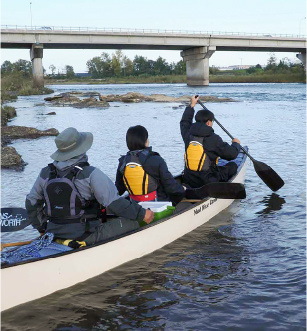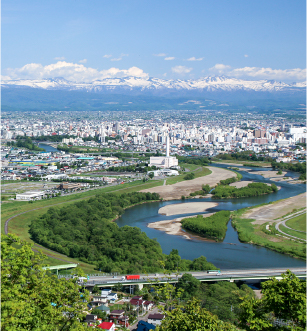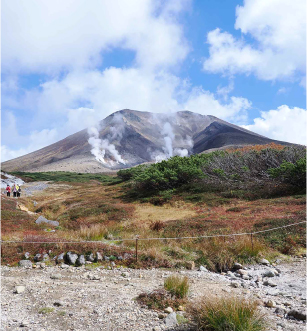
Daisetsuzan National Park,” located in central Hokkaido, is home to magnificent mountains and beautiful landscapes centering on Asahidake (2,291m), the highest peak in Hokkaido, and a wide variety of alpine plants and rare wildlife.
The best way to fully enjoy such a vast field is to take a self-guided tour. Self-guided tours are free tours where you can enjoy walking on your own without an escort or guide. Walk at the pace that is most comfortable for you. If you get tired, take a rest without worrying about the time. You are free to stop at any café that catches your eye. In the evening, sipping a glass of wine while gazing out the window at the snow-capped mountains and planning what you will do tomorrow will tickle your adventurous spirit.
Why don’t you join us for a free adventure tourism in the Daisetsuzan area of Hokkaido, which is full of seasonal attractions?
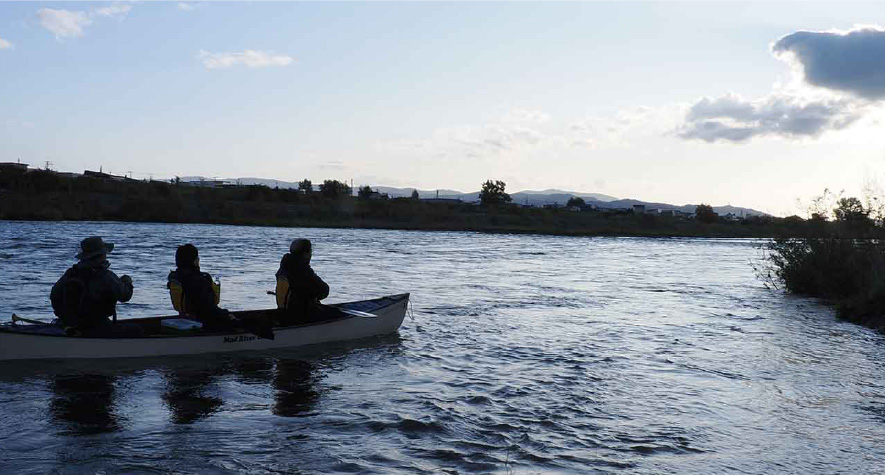

Adventure travel is defined worldwide as “a journey that includes at least two of the following elements: activity, nature, and culture.
Hokkaido, blessed with abundant nature, offers a wide variety of outdoor activities. In particular, the Daisetsu area, surrounded by high altitude mountains, offers dynamic snow activities, mountain climbing, river rafting, and more. With traditional Ainu culture and a rich culinary culture, Hokkaido has all three elements necessary for AT. Here are some self-guided tours full of Hokkaido’s charms, perfect for adventure travelers!
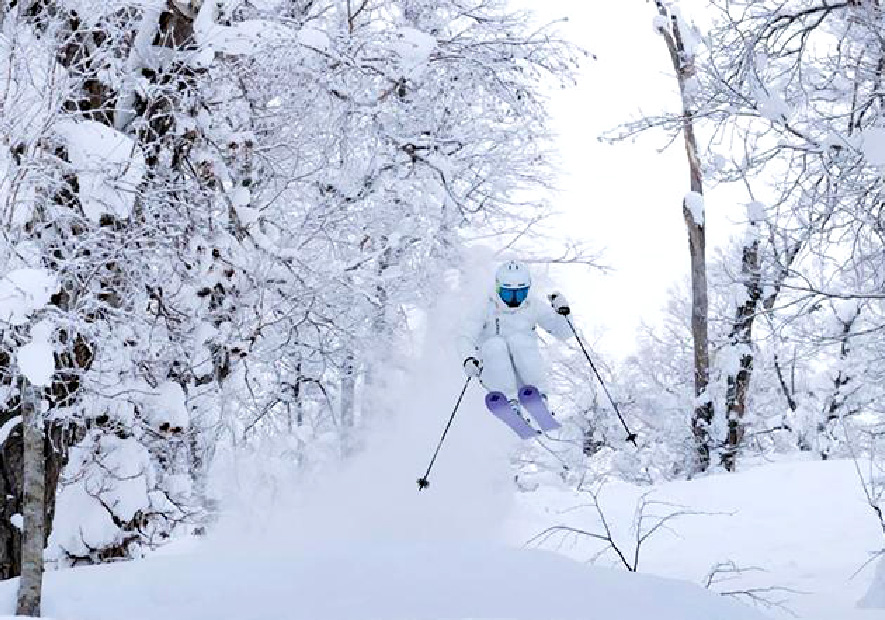
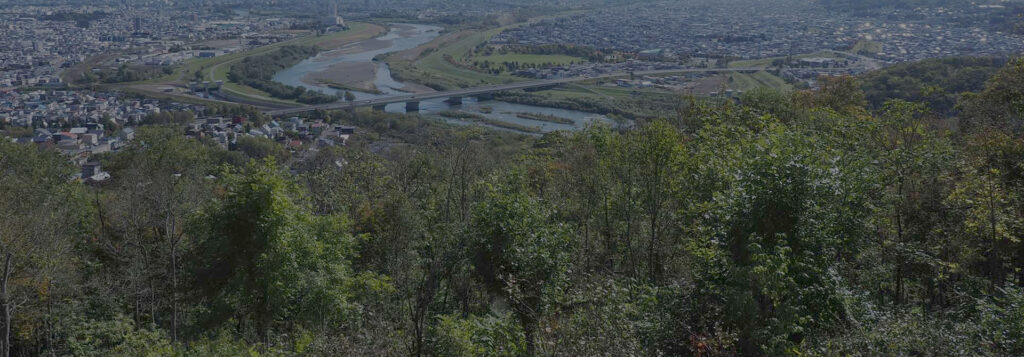
About the Taisetsu Area
Remarkably Cold
Winters are very cold in this region. In midwinter, minimum temperatures can drop to around -30°C, especially in the colder areas.
Hot Summers, Cool Nights
Because of its inland location, the temperature difference between morning and evening is quite large. In summer, heat tends to accumulate due to the basin topography, and it is noticeably hotter during the daytime than in coastal areas.
Snow Paradise
Overall, there is more snow. In particular, the further north and west you go, the more snow tends to accumulate. Due to the cooler temperatures, snow tends to accumulate more efficiently, and the region has more “snowfall” for its “precipitation”.
Temperatures
Temperatures are quite low, sometimes reaching the -20°C range in March, with temperatures rising at a rapid pace from April onward, and daytime temperatures are more likely to rise than in areas by the sea. Especially in the Furano area, the maximum temperature in May can reach 30℃ or more, which is called “Midsummer Day”.
Weather
April and May are the best months of the year for weather, with March being the month when snow clouds tend to move in from the Sea of Japan, so the further north you go, the fewer hours of sunshine you will see. Precipitation is also at its lowest, and heavy rainfall is quite rare.
Snow
March is still a snowy season and can sometimes be heavy. Rooted snow tends to remain until late March or early April on the plains around Asahikawa and Furano. Asahidake and Kurodake still have a lot of snow.
Temperatures
Even in summer, there is a large temperature difference between morning and evening and daytime. During the daytime, temperatures tend to rise in this region of Hokkaido, especially in the Furano area, where “midsummer days” with maximum temperatures of 30°C or higher are particularly frequent. The mornings and evenings tend to be cold, and even in mid-summer, the minimum temperature may fall below 10°C.
Weather
Overall, sunny days tend to be neither too much nor too little, and while there is little rain until June, precipitation in July is particularly heavy in this region of the province. In years when the Okhotsk high pressure system is strong, the weather tends to be more irregular in the northern part of the region. Because of its steep mountainous terrain, the region is prone to “evening showers” in summer.
Temperature
Unlike along the coast, temperatures are not affected by warm sea water temperatures, so the drop in temperature is rapid. Depending on the location, the temperature may become “icy” cold in September, and from October onward, the temperature below freezing increases, with temperatures below -10°C sometimes being observed in November. However, daytime temperatures tend to rise until September, and especially south of Asahikawa, maximum temperatures reach around 30°C (86°F), which sometimes feels like “lingering summer heat.
Weather
The weather is not so good in September, when the autumn rain front causes a little more rain, and from October onward, the “winter pressure pattern” gradually increases, which accelerates the decreasing trend of sunny days.
Snow
The first snowfall is usually observed in October. The amount of snowfall in autumn is the heaviest in the region, sometimes more than 30 cm per day.
Temperature
It is characterized by “severe cold” in any case. The severe cold is caused by the “radiative cooling” phenomenon (the loss of heat from the ground on sunny days when the wind is light) that is unique to the interior of the country. The morning chill depends on the terrain, but in the coldest areas it is common to observe temperatures below -30°C (-40°F) in some years. Because radiative cooling is too strong, the timing of temperature increases during the day is negligible, and daytime temperatures are not positive in the majority of cases.
Weather
Because of the intermittent snow clouds that drift in from the Sea of Japan, clear skies are infrequent. The number of hours of sunshine is extremely low in December, and tends to increase gradually through February.
Snow
Overall, the region receives a lot of snow. Snow tends to fall most frequently in December, when sea water temperatures are high, and the amount of snowfall tends to decrease slightly through February.
Self-guided Tours









